“The Omega Glory”
Written by Gene Roddenberry
Directed by Vincent McEveety
Season 2, Episode 25
Production episode 60354
Original air date: March 1, 1968
Stardate: unknown
Captain’s log. The Enterprise arrives at Omega IV to find the U.S.S. Exeter already in orbit. Kirk is surprised, as the ship wasn’t scheduled to be there. There’s no sign of damage, but no sign of life, either.
Kirk, Spock, McCoy, and Galloway beam to the engineering section (Galloway is facing a different direction when they materialize for some reason), and they find a whole bunch of uniforms and piles of crystals half in and half out of those uniforms. It’s pretty grisly. McCoy reports that the crystals are what would remain of the human body if you removed all the water from it. The crew didn’t leave while naked, they’re all still there and dead.
Searching the ship, they find only uniforms, no life. They head to the bridge to find the same thing. Spock calls up the last log recording, made by the ship’s surgeon Dr. Carter before he died. He says that anyone on the ship is dead and the only hope of survival is to beam down to the planet. They do so, and find a man about to be beheaded, with a woman held prisoner nearby.
But the execution stops, not because of the Enterprise landing party, but because Captain Ronald Tracey of the Exeter shows up. He instructs the executioner—one of the Kohms (who are all Asian)—to spare the Yangs (who are all Caucasians), but imprison them. Tracey had beamed down with a landing party. The rest of his team beamed back to the ship and took a disease back with them that killed them all. Tracey has remained immune while staying on the planet.
McCoy has equipment beamed down so he can analyze the disease. Meanwhile, Spock and Galloway learn that Tracey used a phaser to drive off a Yang attack on the Kohm village. (They were also ambushed, with Galloway hurt.) Spock also found several expired phaser power packs next to Yang bodies, and sees that thousands of Yangs are massing to attack the village.
Before Kirk can take action against Tracey—his use of a phaser is a violation of the Prime Directive—Tracey himself shows up pointing a phaser. He kills Galloway and contacts the Enterprise, saying that the landing party is fevered and delirious. Tracey then explains to Kirk that nobody on this world has ever suffered disease. One of the younger Kohms is over four hundred years old, and his father is over a thousand.
Tracey wants McCoy to isolate whatever it is that allows this immortality and extract it from the thing that kills you when you leave the planet. Kirk tries to fight his way out, but Tracey gives him a good beat-down and takes him to the dungeon where Spock, McCoy, and the two Yangs already are. McCoy is freed to work further on the problem, while Kirk is put in the cell with the Yangs, who also try to beat Kirk up (it’s just not his day). The fight only ends when Spock manages to reach through the bars of his cell to neck-pinch the woman.
Kirk’s offhand use of the word “freedom” gets the male Yang’s attention. Freedom is, he says, a “worship word.” It turns out that the Yangs aren’t savages who don’t talk, they just don’t talk to Kohms. At Spock’s suggestion of trying to loosen the bars in the old mortar, Kirk works with the Yangs to do so, but once the first bar comes off, the Yang clubs Kirk on the head and frees himself and the woman. They escape, leaving Kirk with a headache (it really isn’t his day)—but also a way out! They escape and head to McCoy.
McCoy determines that a biological war was fought on Omega IV centuries ago, which is what led to the disease that killed the Exeter crew. Much of the population was wiped out, but those who survived developed an immunity and their antibodies allow them to live a long life. He also discovers that anyone becomes immune after time—if Tracey’s landing party had just waited a few more hours, the Exeter crew would all be alive.
Spock’s about to jimmy the medical scanner to contact the Enterprise, but Tracey shows up and shoots Spock, badly wounding him. Tracey, who looks like crap, reveals that the Yangs have attacked the village. Tracey drained all his phasers repelling them. Tracey orders Kirk at phaserpoint to beam down more phasers so Tracey can fight off the next Yang attack.
Tracey relaxes his guard after Kirk makes the call, and Kirk takes advantage to run away. Tracey chases him through the Kohm village, and tracks him down—but his phaser is now drained of power. So they go hand to hand for a bit, only to be captured by a bunch of Yangs.
The Yangs capture McCoy and Spock as well. Kirk makes the hilarious leap in logic that the Yangs and Kohms are parallels to the Yankees and the Communists, but the war that was avoided in the 20th century happened, and the “Asiatics” won. Oh, and he makes the leap by observing that the Yangs are now acting like the American Indians. Sure.
And then they top it off by bringing in an American flag. Because of course they do.
The Yang male from the cell is Cloud William, the leader of the Yangs. He plants the flag in the Kohm throne room, and starts reciting a chant that is very much like a corrupted version of the Pledge of Allegiance. Which Kirk then finishes reciting, stunning the Yangs, as those are their holy words.
Tracey tries to convince Cloud William that the Enterprise crew are evil, while Kirk tries to convince him that they’re all just regular folks, they just happen to be from the stars. Tracey uses Spock—with his satanic look and “lack” of a heart (it’s not where it would be in a human)—to bolster his argument. Cloud William tries to see if the evil ones can speak the sacred words, but Kirk doesn’t recognize it—at first.
Finally, they decide with trial by combat between Tracey and Kirk, who are bound at the wrist by a leather strap. A sword is in the floor which a combatant can use.
As the fisticuffs go on (and on and on), Spock—despite being badly wounded—manages to make a telepathic suggestion to the Yang woman to use the conveniently-right-next-to-her communicator to call the Enterprise.
However, Kirk finally gets the upper hand, but rather than use the sword on Tracey, he spares him. And then Sulu beams down with two security guards, at which point Cloud William decides that they’re gods. But Kirk has him get up off his knees. He finally figured out why the sacred words were so familiar—like the Pledge, it is a linguistic corruption of the Constitution of the United States. The Yangs say those sacred words are only for the chiefs, but Kirk insists that they were written for everyone, and must apply to everyone or they’re meaningless.
Kirk says they’ll leave these people in peace to find their way back to liberty, and they take Tracey under arrest. One assumes Sulu and the two security guards stayed on-world long enough to develop the immunity…
Fascinating. Spock can apparently mind-control a Yang woman just by staring at her really hard, which is a way more precise bit of mind control than he’s ever managed before or since, since in the past he’s only been able to influence general actions (“A Taste of Armageddon“) or read things in people’s minds (“Dagger of the Mind,” “The Changeling,” “By Any Other Name“).
I’m a doctor not an escalator. McCoy saves the day with his scientific prowess. Because he’s just that awesome.
Ahead warp one, aye. Sulu commands the ship in Kirk and Spock’s absence once again, reinforcing the notion that he was intended as the third-in-command from jump. It never made sense that the chief engineer was part of the chain of command (notably, the various 24th-century spinoffs did away with this notion), with Sulu always making a ton more sense as the ship’s second officer.
Hailing frequencies open. Uhura gets to call the surface a lot. Fun stuff.
Go put on a red shirt. Poor Galloway gets attacked by the Yangs and then Tracey shoots him like he’s an injured horse being put out of his misery. Kirk barely even notices that he’s been shot. (Hell, Kirk mispronounces his last name as “Galway”—perhaps mixing him up with another doomed crewmember whose death had no obvious effect on him—at the top of the episode.)
Channel open. “Who knows? It might one day cure the common cold, but lengthen lives? Poppycock! I can do more for you if you just eat right and exercise regularly.”
McCoy making it clear that he’s a better scientist than Tracey, which the blue shirt should have already made clear.
Welcome aboard. Morgan Woodward, having previously played the insane van Gelder in “Dagger of the Mind,” returns to play the insane Tracey here. David L. Ross appears as Galloway again, and is killed, though he’ll appear again as Galloway in “Turnabout Intruder” (and as another redshirt, Johnson, in “Day of the Dove”). Ed McCready makes the latest in a series of appearances in Vincent McEveety-directed episodes by showing up here as Carter (he was in “Dagger of the Mind,” “Miri,” and “Patterns of Force,” and he’ll be back in “Spectre of the Gun”).
Various Yangs and Kohms are played by Roy Jenson, Irene Kelly, Morgan Farley, Lloyd Kino, and Frank Atienza, while we’ve also got recurring regulars Nichelle Nichols and George Takei.
Trivial matters: Sulu’s experiences in this episode prove handy in the novel Forged in Fire by Andy Mangels & Michael A. Martin, as a retrovirus he’s exposed to in the novel uses bacteriological elements from Omega IV, to which he’s now immune.
The novel Forgotten History by regular rewatch commenter Christopher L. Bennett establishes that the copies of the Constitution and American flag and the Pledge of Allegiance were left by an Earth Cargo Services vessel, the Philadelphia, in the early days of space travel to inspire the Yangs in their fight for freedom, which makes a lot more sense than anything in this episode. There was no record of it because the crew of the Philadelphia all died of the virus after leaving the planet.
Gene Roddenberry wrote the first draft of this script early on in the first season, but NBC thought the script was weak (more proof that studio notes aren’t all bad). He was able to sneak it into production late in the second season, because it was obvious at this point that NBC didn’t give a damn. Having said that, it was during the closing credits of this episode that it was announced that the show was renewed for a third season.
In Ruth Berman’s famous “Visit to a Weird Planet” story in Star Trek: The New Voyages, William Shatner, Leonard Nimoy, and DeForest Kelley trade places with their fictional counterparts on the Enterprise, and it occurs during the filming of this episode.
To boldly go. “All this is for nothing!” Whenever Star Trek fans get into arguments—which happens with depressing regularity—one of the talking points is almost inevitably some variation of “this is/isn’t what Gene Roddenberry had in mind.” Roddenberry’s needs, wants, desires are often factored into it, as if he is the auteur of Star Trek.
The auteur theory is a popular one, but it so rarely applies to screen presentations because way too many hands are involved in it. Even the most aggressive single-vision shows—J. Michael Straczynski with Babylon 5, Chris Carter with The X-Files, Joss Whedon with Buffy the Vampire Slayer, Vince Gilligan with Breaking Bad, Ronald D. Moore with Battlestar Galactica, to give some obvious examples—still have plenty of other people involved that make the show what it is (The X-Files without the influence of Glenn Morgan, James Wong, and Darin Morgan doesn’t bear thinking about). And then you’ve got other shows where the singular vision departs—Eric Kripke on Supernatural, Aaron Sorkin on The West Wing—but the show continues.
When people try to cite Roddenberry as the auteur of Star Trek, I cringe, because—while it was very definitely his creation—the show owes its success to the people he worked with, and the people who came after him at least as much.
And in some cases, people whom Roddenberry had no say in the hiring of (which is everyone after he died in 1991, obviously). I know it’s popular now to slag J.J. Abrams and his fellow Bad Robot folk who did the last two movies, because they’re not “real Star Trek.” I always laugh at that, because people forget now that Roddenberry spent most of 1982 going to conventions and urging fans not to see The Wrath of Khan because it wasn’t “real Star Trek” and that this Nicholas Meyer fella didn’t know his ass from his elbow and he would ruin Trek, and it wasn’t his vision, dammit. (Never mind that he made enough of a pig’s ear out of The Motion Picture that Paramount went to great lengths to keep him from ever having anything to do with a Star Trek movie ever again.)
He stopped doing that once fan reaction to the second movie was so overwhelmingly positive, of course.
The thing is, while Roddenberry’s creation was a great thing, it was a lot of other hands that made it great, because as a writer? Roddenberry wasn’t all that and a bag of chips.
Let’s look at his writing credits for the original series, shall we? We’ve got “The Cage,” a failed pilot (and a mediocre episode, all told). We’ve got “The Menagerie,” which wraps the failed pilot in an overly melodramatic bit of nonsense. We’ve got “Bread and Circuses,” which is actually a decent satire, if somewhat nonsensical. We’ve got the stories for “Charlie X” (which is actually pretty good), as well as “Mudd’s Women,” “The Return of the Archons,” “The Savage Curtain,” and “Turnabout Intruder” (which really really aren’t), and also “Assignment: Earth” (which is more of a backdoor pilot than it is a Trek episode). Oh, and we have “A Private Little War,” which is pretty awful. (We won’t even get into his three contributions to TNG, the mediocre pilot, the flawed “Hide and Q,” and the embarrassing “Datalore.”)
And then we have this misbegotten piece of crap.
There is not a single redeeming feature of this episode. Like Morgan Woodward’s last guest appearance, we have a bad guy in Tracey whose motives are utterly unclear. We don’t know why he suddenly decided to arm the Kohms against the Yangs, or why he decided to just murder Galloway. (Maybe he figured that he was just a security guard, and Kirk would neither notice nor care. The rest of the episode bears this notion out.) This is the second time we’ve seen a captain lose his entire crew, but where Decker in “The Doomsday Machine” was obviously suffering major PTSD, Tracey barely seems to even give a damn. He’s actually quite cold and calculating, not going binky bonkers until later when he’s been in a massive firefight that he barely survived.
And then we have the complete WTFery of the Yangs and the Kohms, down to the American flag (with 50 stars!) and the linguistic drift versions of the Pledge of Allegiance and the Constitution. (My favorite is that it’s the amended version of the pledge, since “under God” wasn’t added to the pledge until 1954, twelve years after it was adopted as the official pledge by Congress, and six decades after it was first written without those two words.) No explanation—not even the nonsense “Hodgkin’s Law of Parallel Planetary Development” we got in “Bread and Circuses“—is even attempted. For some stupid reason, the landing party just accepts that this planet evolved in so exactly the same way, down to the handwriting on the Constitution.
I haven’t even gotten to the offensive racial portrayals here. Tracey expresses surprise that the people “who look like us” are the primitive savages while the “Asiatic” Kohms are kind and gentle, because of course, it should totally be the other way around! (One wonders how Tracey would have responded if Sulu had led the landing party…) And then Kirk makes the connections to the history of the western hemisphere, solely because the Yangs happen to dress like some Native American tribes. And then, of course, the “Asiatics” (wince wince wince) turn out to be the real bad guys (just like the Commies, those bastards!) and the Yangs are the noble freedom-loving folk and all they have to do is read their Constitution and everyone will live happily ever after. And then I start slamming my head into the desk.
Gene Roddenberry created Star Trek, and for that, we owe him a debt of gratitude, because he created a truly great thing.
But he also wrote this abomination with its offensive racial portrayals, with its stupid plot, with its idiotic and unconvincing Earth parallels, and with a simply endless number of fist fights. Both are part of his legacy.
Warp factor rating: 0
Next week: “Assignment: Earth”
Keith R.A. DeCandido is the Author Guest of Honor at Treklanta 2016 this coming weekend, alongside actors Carel Struycken, Tracee Lee Cocco, Jack Stauffer, Java Green, and Lynn McArthur; fans Bjo & John Trimble; and numerous other authors, performers, and fan film folk.










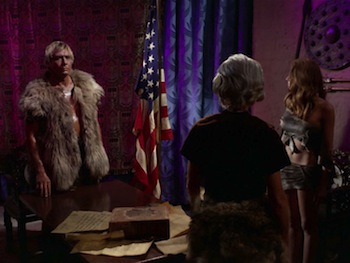
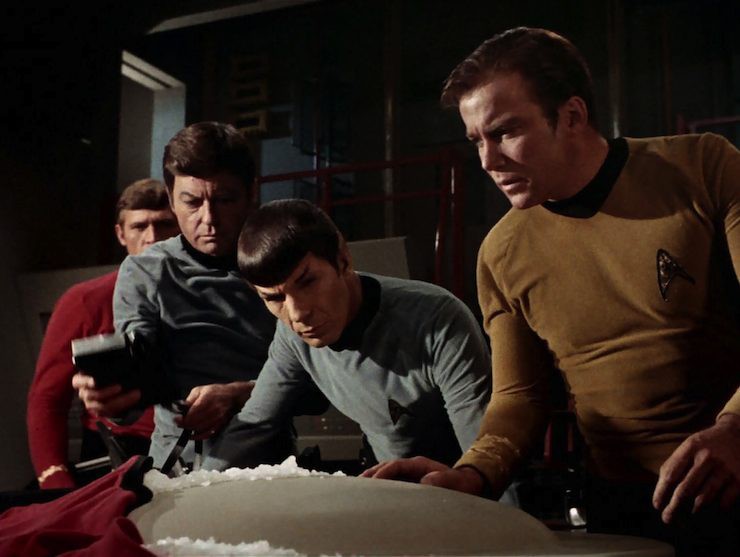
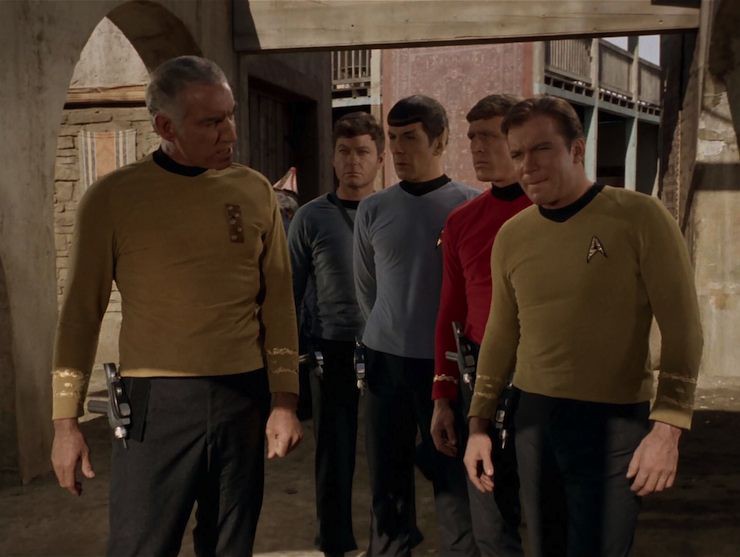
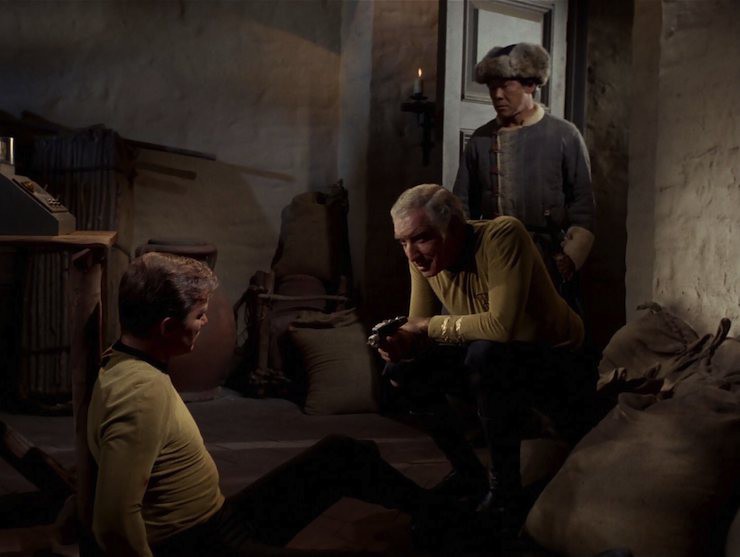
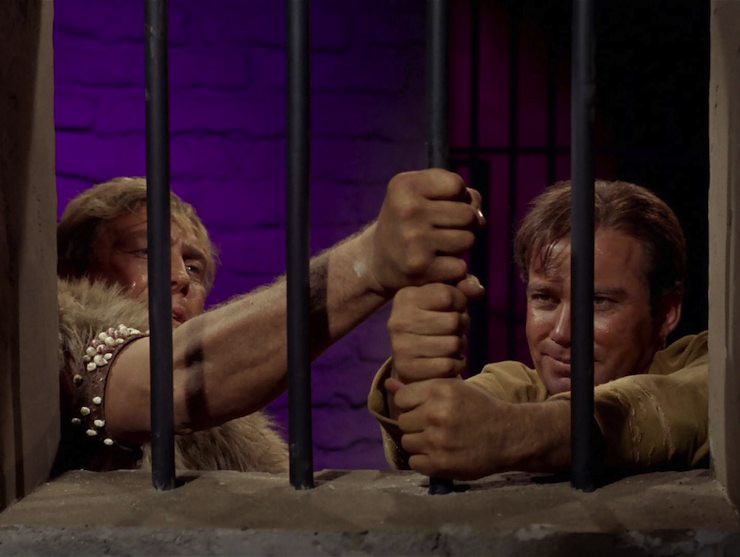
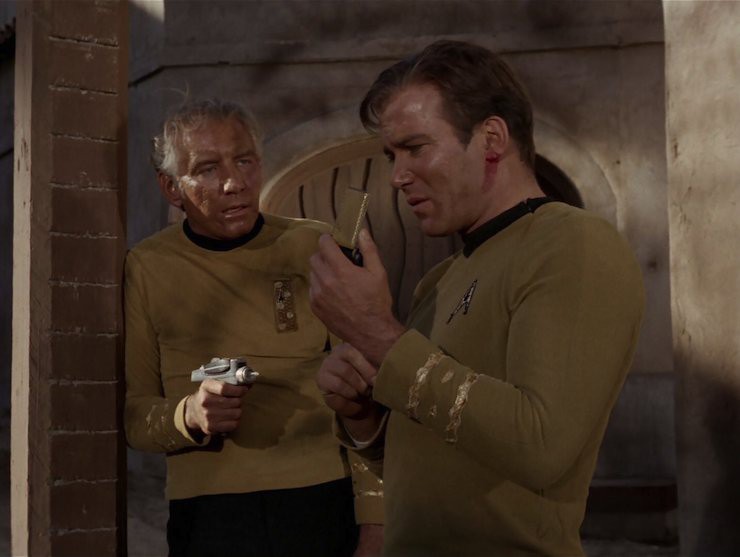
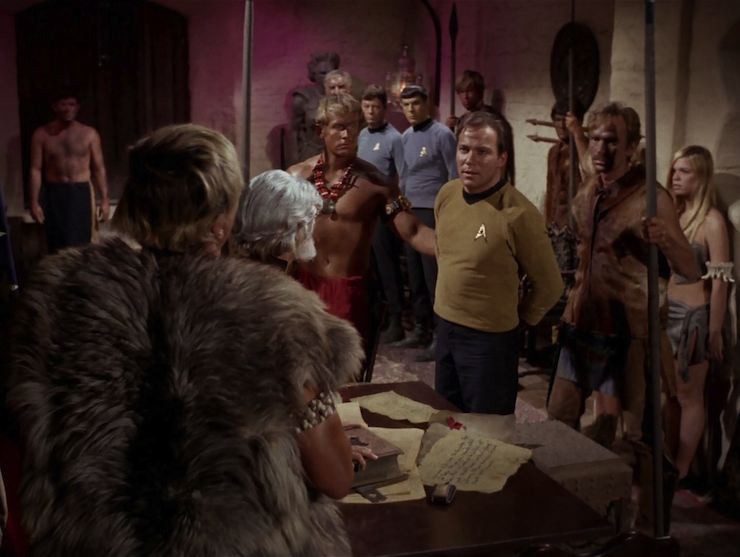
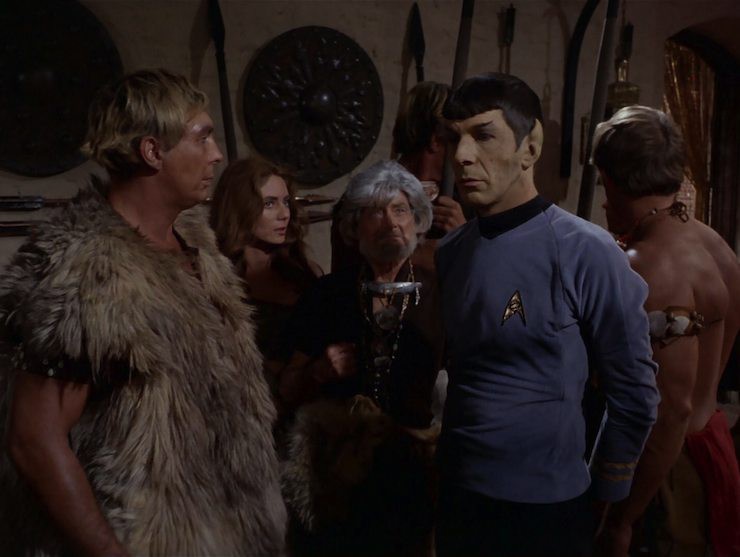
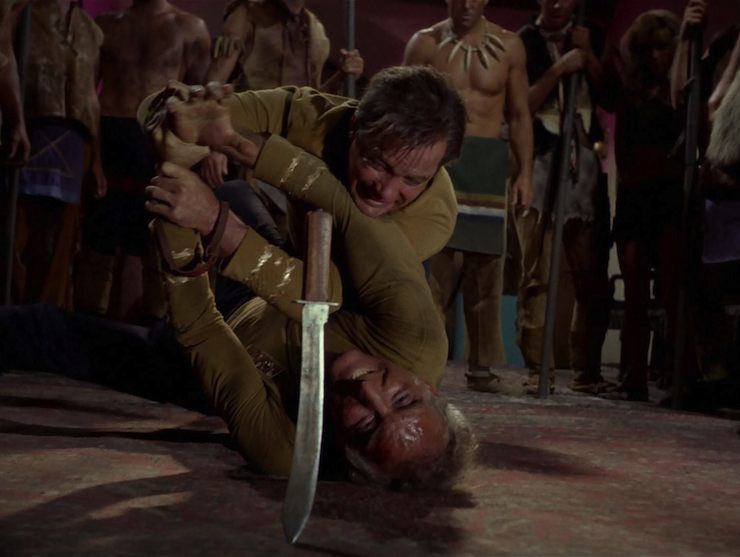
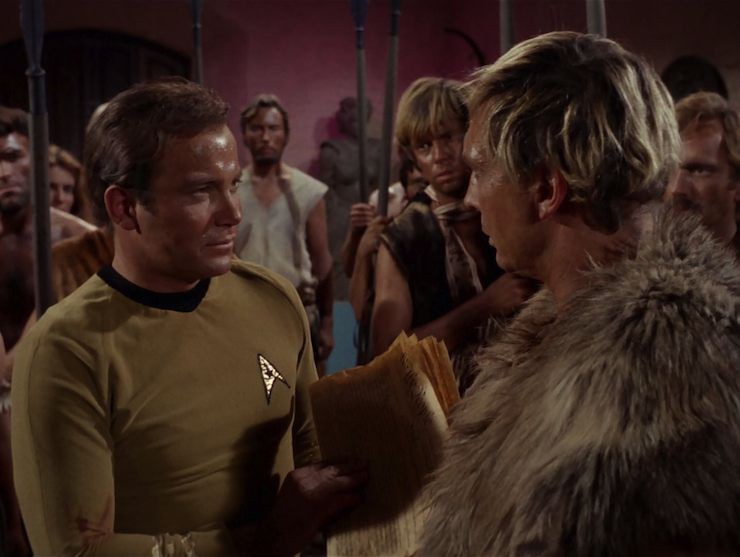
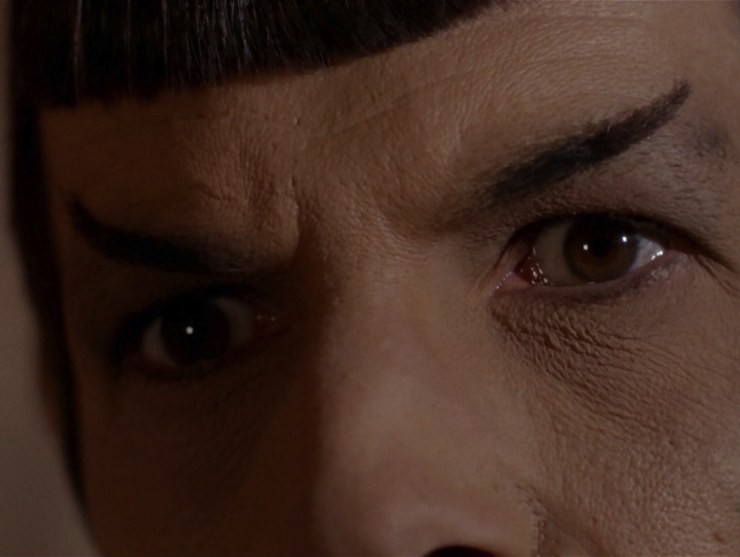
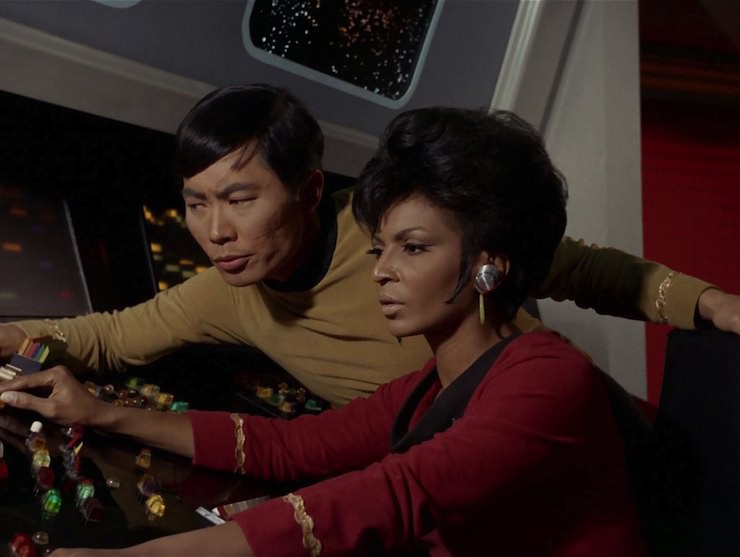
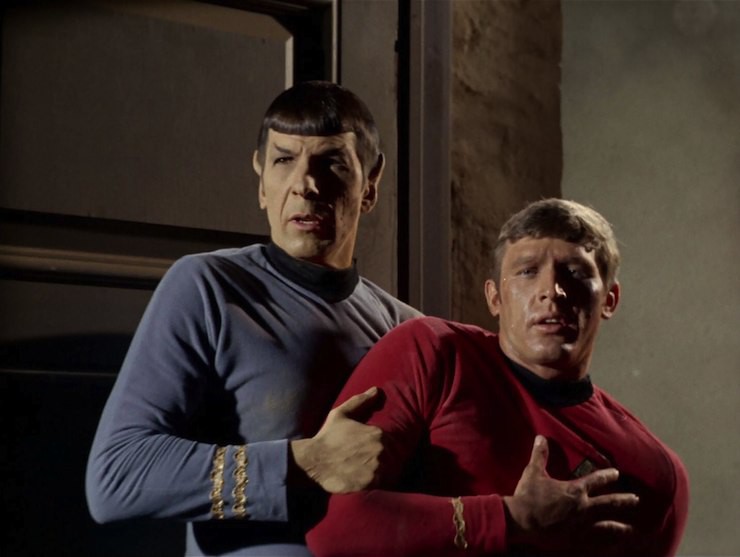
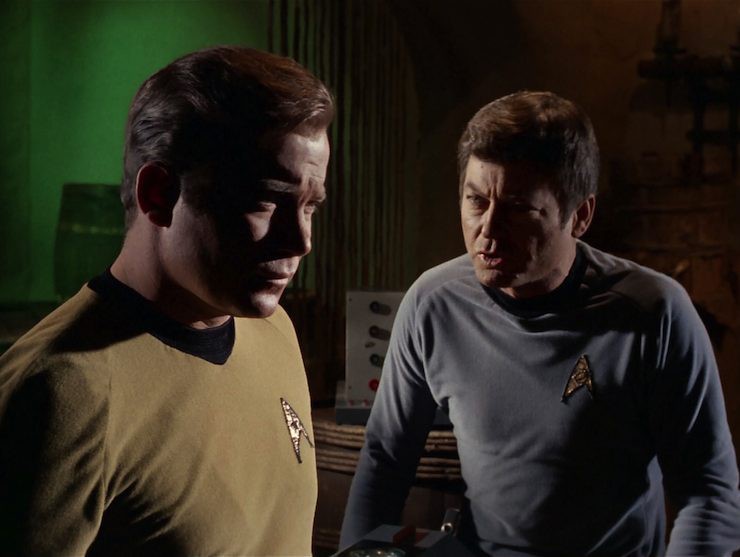
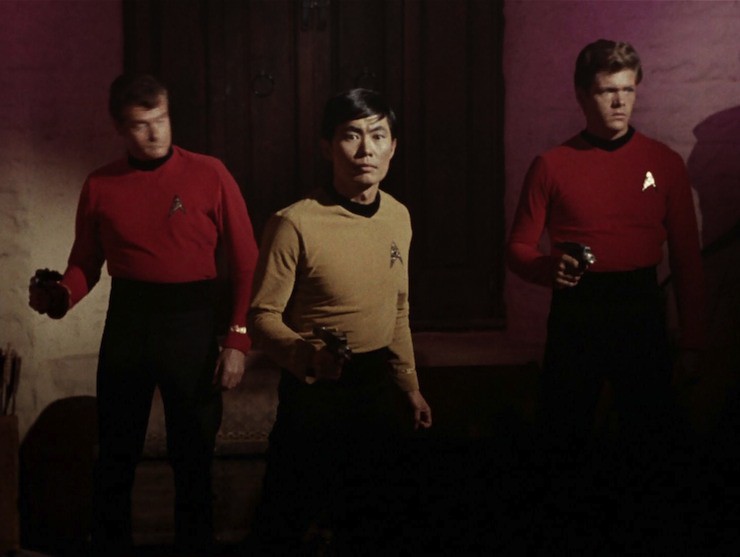
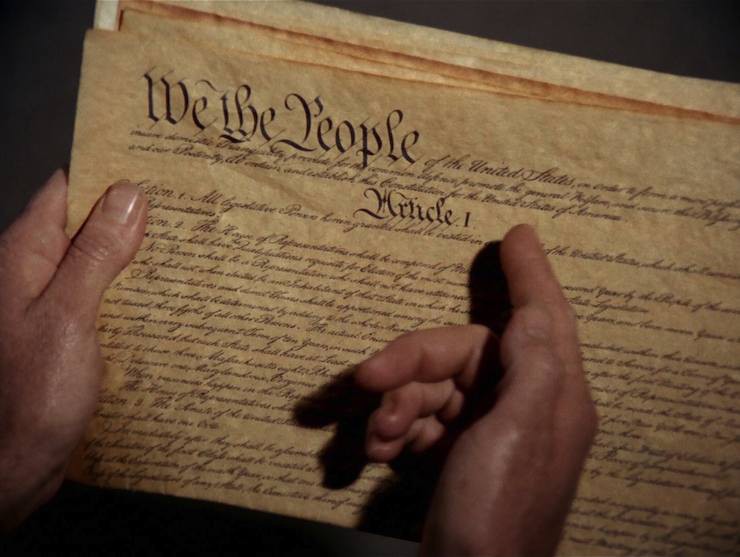
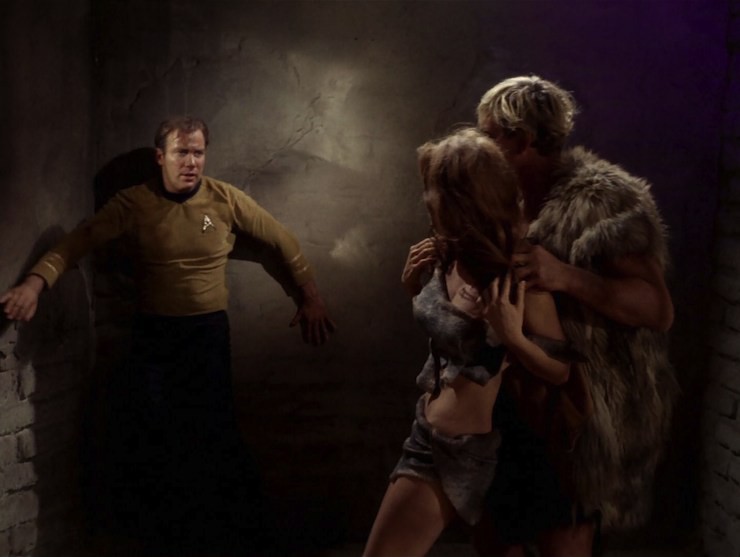
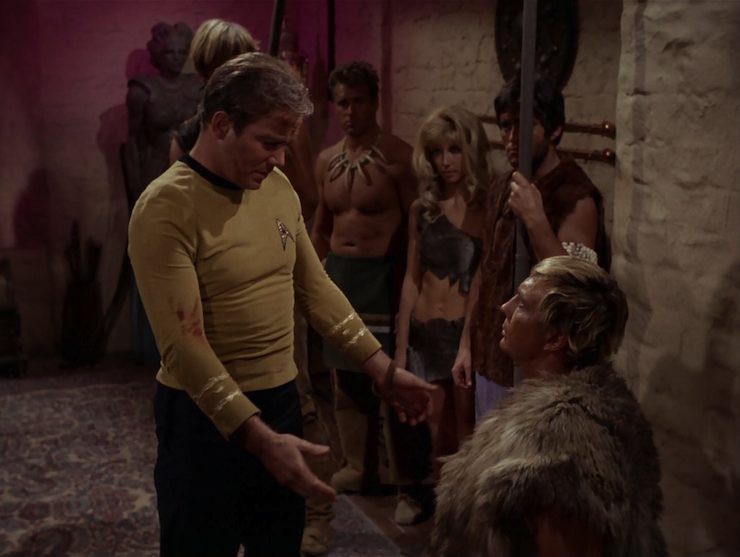
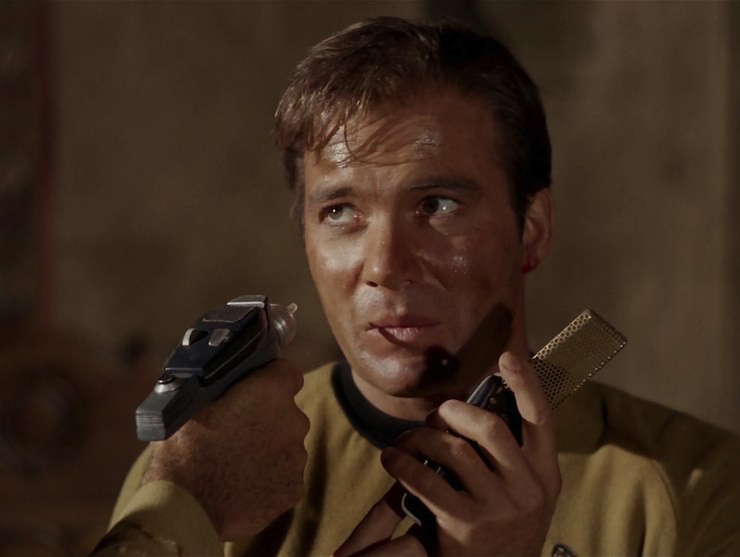
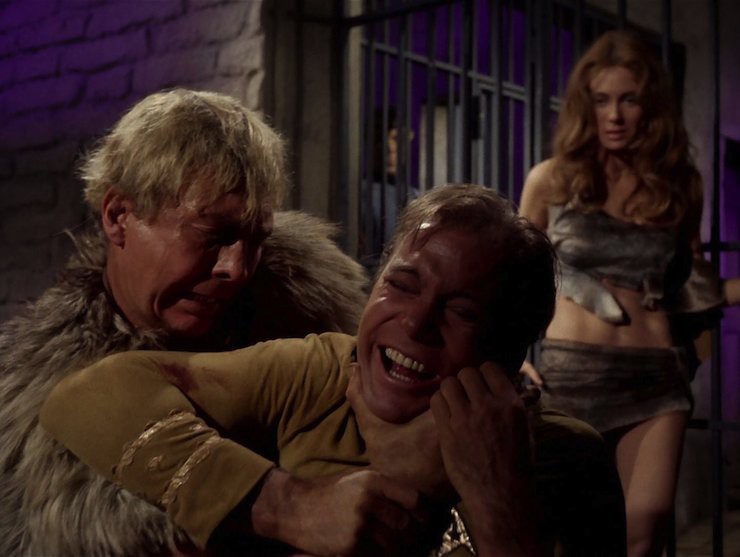
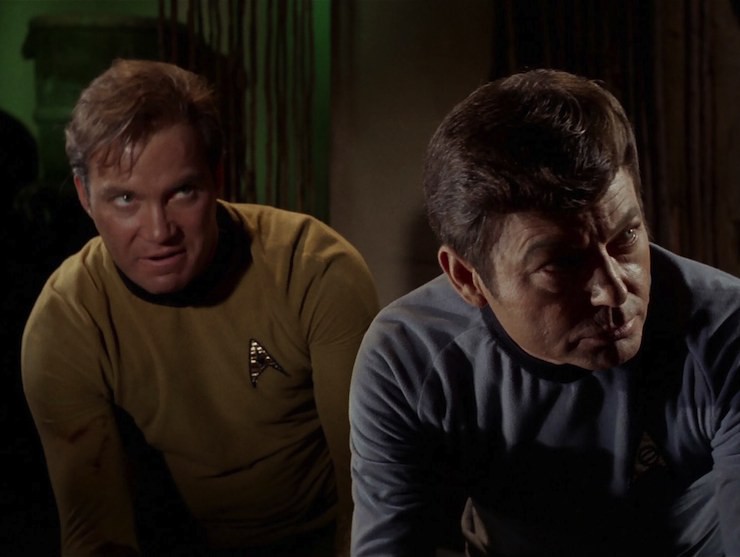
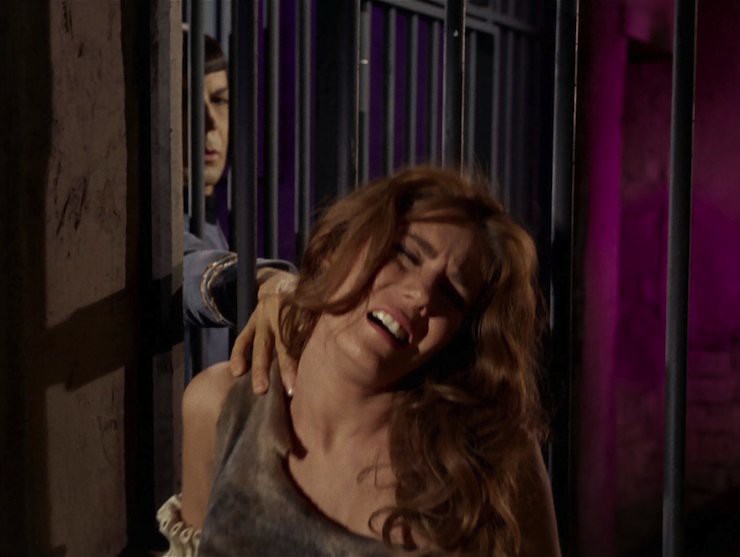
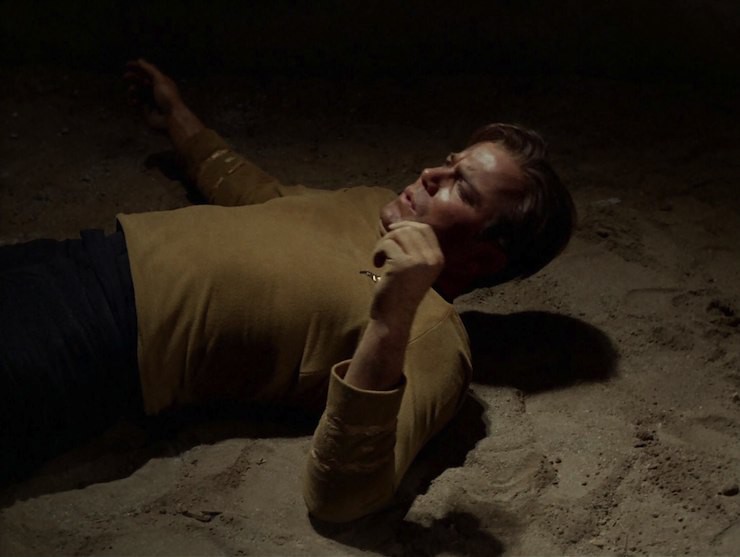
You forgot one of the most damning points — the crappy ending isn’t even original. No, Roddenberry ripped it off from Asimov’s The Stars Like Dust.
That’s true—but that ending was imposed on Asimov, as recounted in his autobiography, by the editor H. L. Gold, and Asimov despised the constitution subplot and thought it rather ruined the book! So it was recognised as a terrible ending even by the first author to use it.
We hold these truths to be self-evident, that some Star Trek episodes are bad and Gene Roddenberry, much like George Lucas, was a great creator but a mediocre writer.
But having said that, I do find this one moderately entertaining on a dumb level. A preview of things to come in the third season…
The Memory Alpha article on this episode makes the following incredible assertion: “A letter reprinted in Inside Star Trek: The Real Story reveals that Roddenberry personally submitted his teleplay for consideration for an Emmy Award.”
It’s one thing to end up with an awful end-result; hey, it happens. It’s another thing that Roddenberry was apparently completely oblivious to just how bad this episode was even after the fact. I don’t really know how the Emmy process works now or back then, but pity whoever had to review that submission.
dunsel: I considered mentioning that in the Trivial Matters section, but decided it would constitute kicking Roddenberry when he was down………
—Keith R.A. DeCandido
Oh, yea, I’ve finally caught up to the re-watch in “real time”! Been enjoying these rewatch/recaps greatly. They inspired me to actually sit down and watch TOS with attention, since everything I remembered about it came from re-runs when I was a kid. It’s been a real eye-opener in all kinds of ways.
That being said, oy vey, this episode is a piece of poo. Redeeming facets…uh…Morgan Woodward manages to look really, really convincingly buggier-than-batsh*t scary? I’m groping, here…nah, that’s it, really. Except that somehow Kirk manages to beat down the big, supposedly tireless “savage” but in every fistfight with Captain Tracey (was it only two? or was it three?) he gets spanked like a bad bad donkey.
Spock’s Brain is still worse… But I didn’t remember this one being that bad. I’d give it 0 because McCoy is still awesome but there really should be an “Impulse power” rating like someone suggested in earlier discussions and this is a prime candidate.
Horrible all around with a plot that doesn’t make any sense.
Keith, disagree with you about The Return of the Archons, I thought it was pretty decent and creepy in the beginning though definitely became worse towards the ending.
Agree on every other point.
Is it possible for an episode to get a negative number instead of 0? Because this is actually worse than Spock’s Brain.
Fair enough Krad. And, to be clear, no pile-on intended.
Elliot– If we’re looking for a few redeeming virtues, the whole “weapon that leaves behind a few pounds of chemicals” is nicely grisly *and* budget-friendly, as it’s much easier to cast “a bag of salt” then extras. Which reminds me, I saw this episode in reruns as a kid and for ten years somehow retained the “fact” that humans are 96% water. It wasn’t until much later that I found out the episode is full of it and it’s more like 70%…
Wow, I didn’t know that you do ratings below 1. But the episode certainly deserves it.
Some additional points:
Why would becoming immune to a virus include developing an extremely long life?
Why do those Yangs wait until they have reconquered the very last village on the planet before they stop “living like the Indians”?
That final fistfight is so silly – after all the episodes where Kirk could outtalk anyone, he can’t even outtalk a mediocre demagogue who has been the Yangs’ enemy all along and has no better argument than Spock’s appearance? I guess that blow to the head did cause some lasting damage after all.
Redeeming feature: I liked it that Kirk could make the request for weapons Tracey demanded because he knew how his people would react, and the mock-apologetic look he gives Tracey afterwards. On the other hand, Tracey really should have known that this would happen… so, not really a redeeming feature.
I like Bread and Circuses, but it was written together with Gene Coon, and IMO he’s the best TOS writer (with the exception of Spock’s Brain); also much better than Nicholas Meyer.
@8 dunsel: Yeah, the low-tech wonder of “oh noes, it’s a pile of bath salts in a uniform!” was pretty special…I ended up watching this episode right after the one where everyone gets turned into crumbly pink cubes, so there was definitely some entertainment value in looking at all the ways you could be killed on TOS without leaving behind an actual corpse…